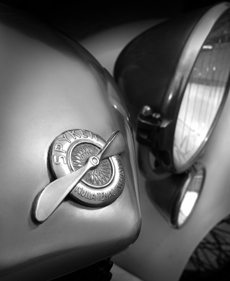The business name was changed to Spyker, for easier recognition in foreign markets.
In 1903 Spyker introduced the extremely advanced 60/80 HP. It was the first car with a six-cylinder engine as well as permanent four-wheel drive and four-wheel brakes. In the same period Spyker introduced its patented ‘dust shield chassis,’ a chassis fitted with a streamlined under tray that prevented the car from making dust on unpaved roads. Innovations such as these characterized the Spyker cars, which quickly became famous for their quality and the ruggedness of their engineering. The Spyker models, with their characteristic circular radiators, were especially successful in the Dutch East Indies and in Britain, where Spyker became known as ‘the Rolls Royce of the continent’.
Spyker's reputation reached further heights when in 1907 a privately entered standard model Spyker 14/18HP Tourer became legendary after successfully competing in the famous gruelling Peking to Paris Raid, taking second place.
I

n the period prior to World War I, a worldwide slump in the luxury car market meant that Spyker had to diversify its production, and so it merged with the Dutch Aircraft Factory N.V. The company started developing and building aircrafts. During the war, Spyker built around 100 fighter aircrafts and 200 aircraft engines. In 1915 the company introduced the slogan that is still used today: ‘Nulla tenaci invia est via:’ ‘For the tenacious no road is impassable’. Along with the slogan came a new logo, featuring a spoke wheel with a horizontal propeller across it.
read more....